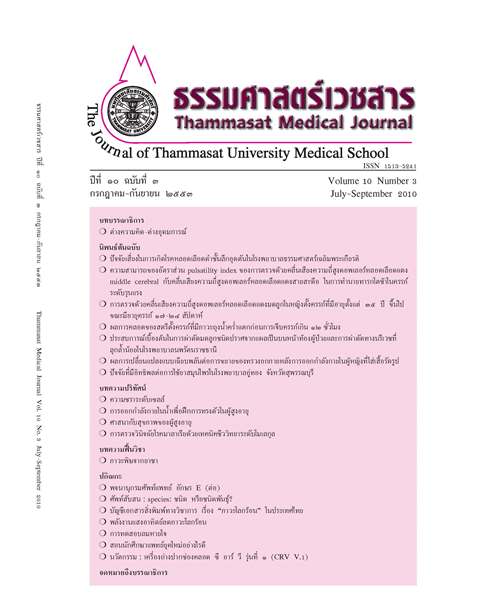Molecular diagnosis of malaria
Keywords:
Malaria, Diagnosis, Molecular biologyAbstract
Malaria is an important infectious disease and causes severe public health problems in many tropicalcountries including Thailand. An effective diagnosis to discriminate the various Plasmodium species is needed toselect the proper regimen for malarial treatment. Diagnosis of malaria by thick or thin blood films under the lightmicroscope is the gold standard. The limitations of this technique are low sensitivity (5-20 parasites/μl) and theneed for an experienced examiner able to discriminate the Plasmodium species. Diagnosis can also be based onthe detection of circulating antibodies and antigens. The sensitivity of the immuno-chromatographical test (ICT)in detection of antigen is 100 parasites/μl. Nucleic acid based diagnosis, e.g., hybridization, polymerase chain reaction(PCR) or loop-mediated isothermal amplification (LAMP), can detect as little as 0.004 parasites/μl. Althoughthe sensitivity of molecular diagnosis is very high, it requires in general expensive equipment. A favorable methodwhich is inexpensive and effective for detection of malaria such as LAMP should be applied. In this article, therationale, principle, advantage and disadvantage of each technique have been outlined to serve as a diagnostic guidelinein the treatment of malaria.
Key words: Malaria, Diagnosis, Molecular biology


